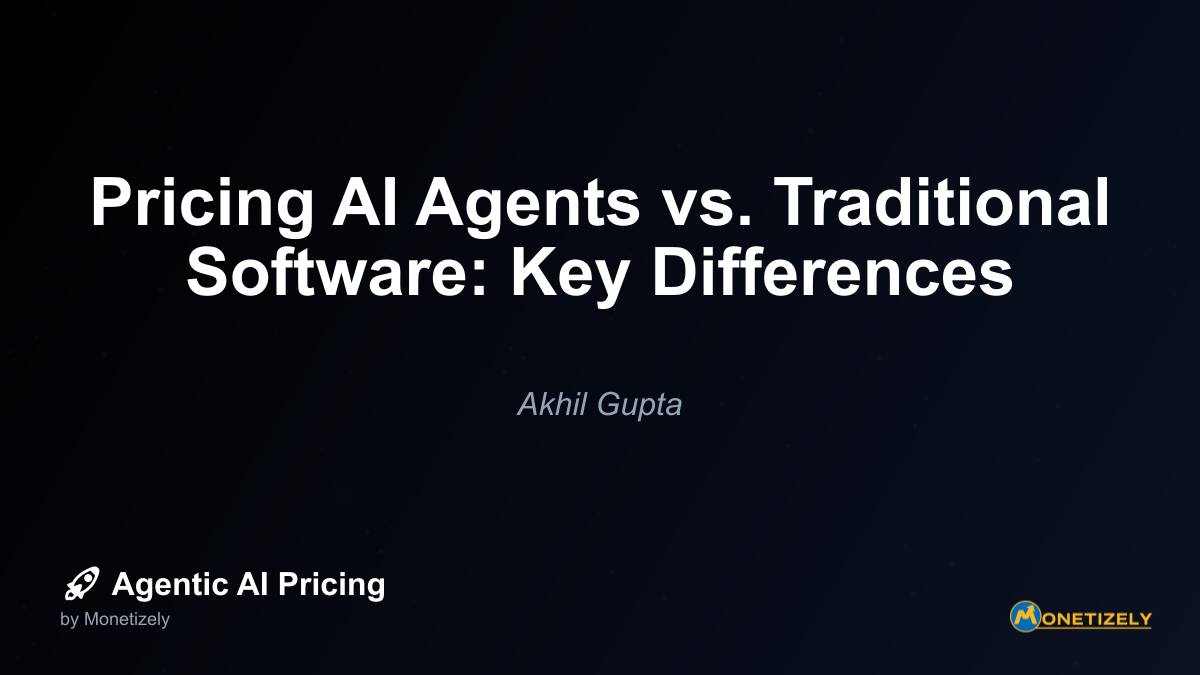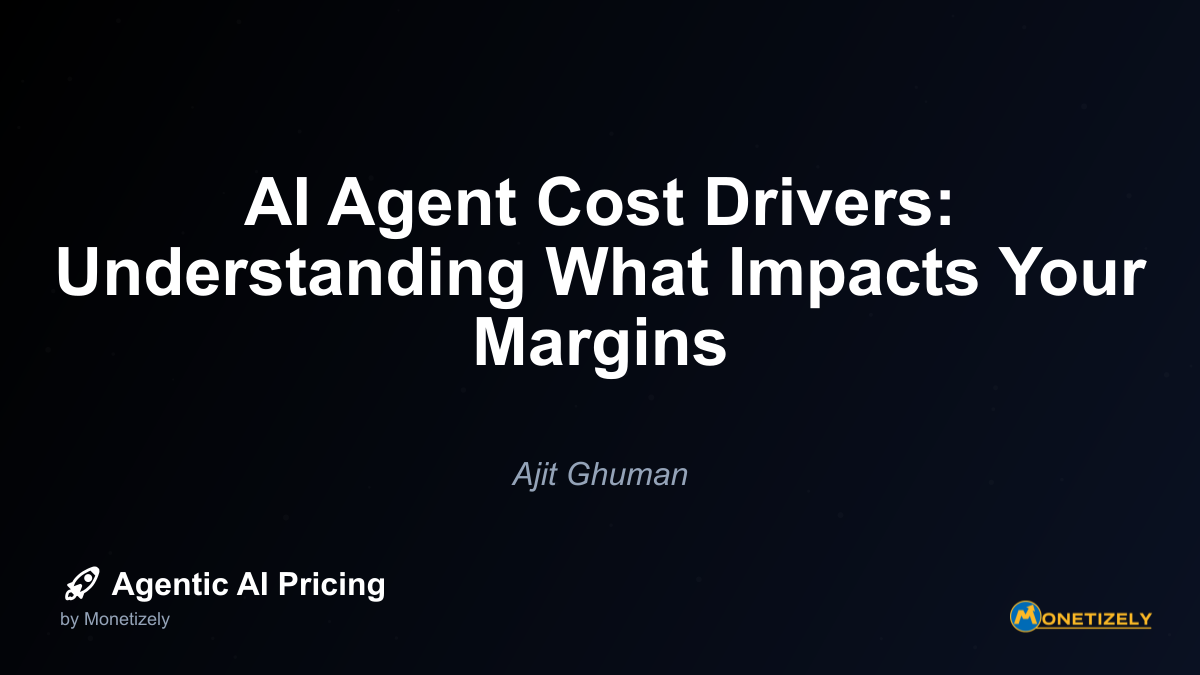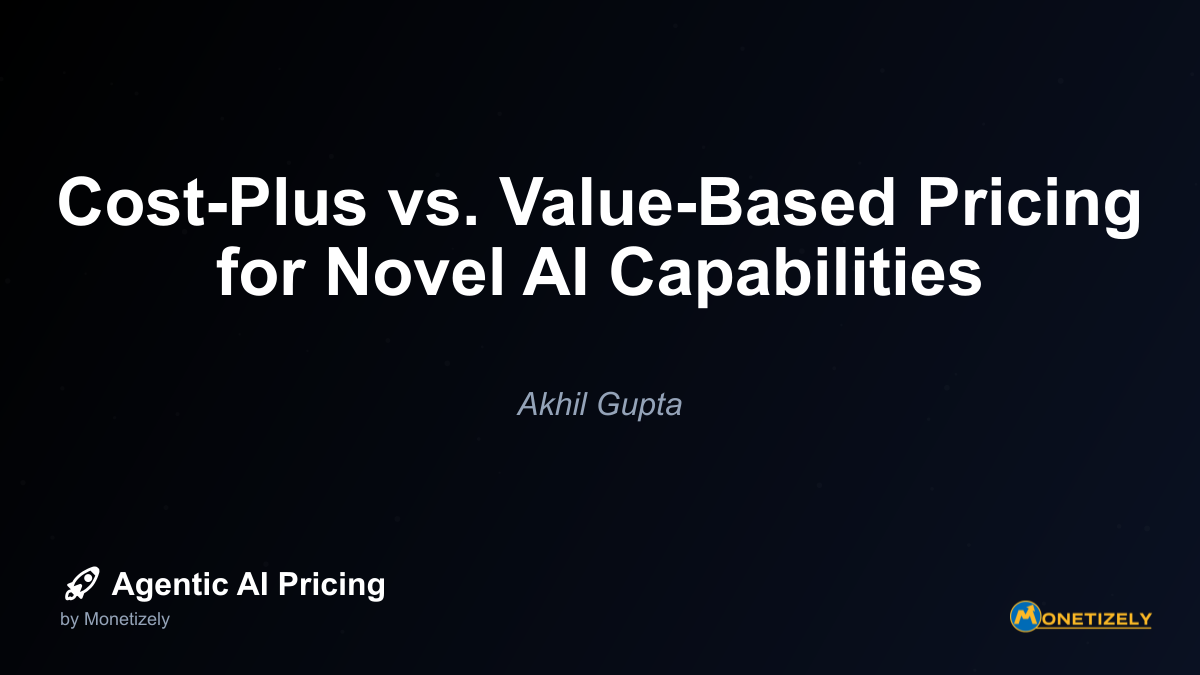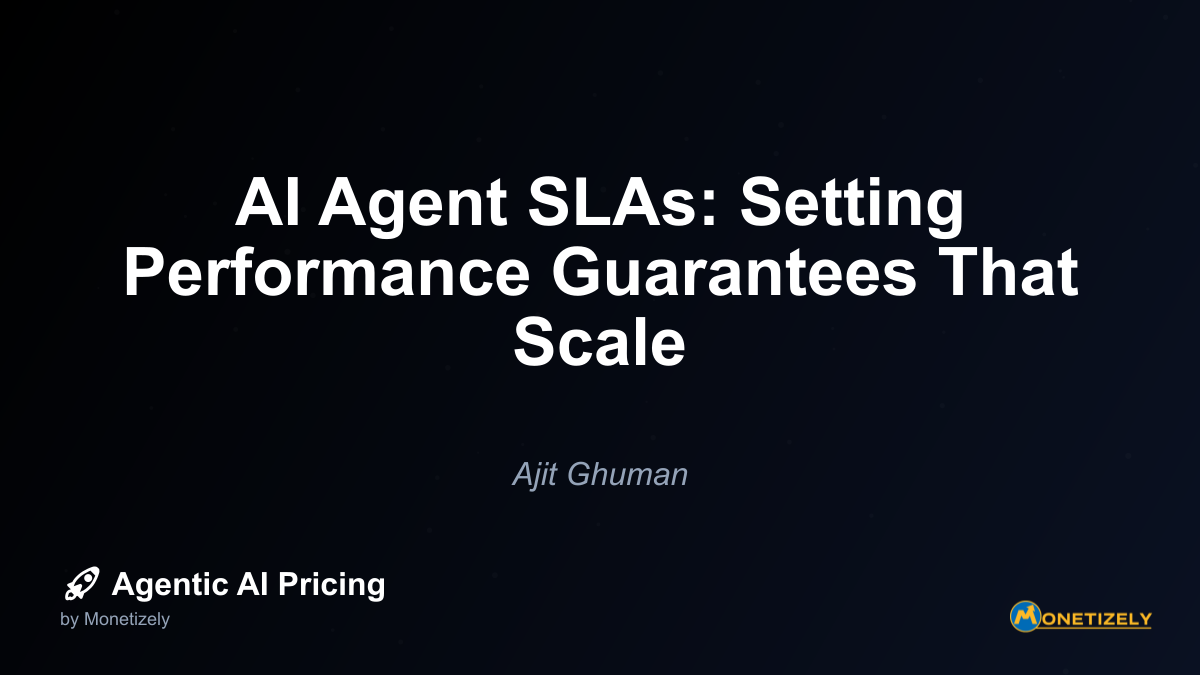· Akhil Gupta · AI Pricing Fundamentals · 12 min read
Pricing AI Features Based on Computational Intensity
AI and SaaS Pricing Masterclass
Learn the art of strategic pricing directly from industry experts. Our comprehensive course provides frameworks and methodologies for optimizing your pricing strategy in the evolving AI landscape. Earn a professional certification that can be imported directly to your LinkedIn profile.

In today’s rapidly evolving AI landscape, one of the most challenging aspects for businesses is determining how to price their AI features and services. As computational resources become increasingly central to AI capabilities, a resource-based pricing approach that aligns costs with computational intensity has emerged as a strategic framework. This approach ensures that pricing accurately reflects the actual resources consumed while delivering value proportional to the complexity of AI tasks performed.
Understanding Computational Intensity in AI Features
Computational intensity refers to the amount of computing resources—processing power, memory, storage, and energy—required to perform AI functions. Different AI capabilities demand vastly different levels of computational resources based on their complexity, data requirements, and processing needs.
The fundamental premise of computational intensity-based pricing is straightforward: AI features that consume more computational resources should cost more than those requiring fewer resources. This approach creates a direct correlation between the technical demands of AI capabilities and their market price.
Factors Influencing Computational Intensity
Several key factors determine the computational intensity of AI features:
Model Size and Architecture: Larger models with more parameters (like GPT-4 versus smaller models) require exponentially more computational resources for both training and inference.
Data Complexity: Processing high-resolution images, long text sequences, or multimodal inputs (combining text, images, audio) demands more computational power than simpler data formats.
Task Complexity: Advanced reasoning, creative generation, or multi-step problem-solving requires more intensive computation than simple classification or prediction tasks.
Real-time Requirements: Features requiring immediate responses need dedicated resources continuously available, increasing computational costs compared to batch processing.
Accuracy and Precision Needs: Higher levels of accuracy often demand more computational resources through larger models or multiple processing passes.
Current Market Trends in Computational-Based AI Pricing (2023-2025)
The AI industry has increasingly embraced resource-based pricing models that reflect computational intensity. By 2025, over 40% of enterprise AI services are expected to incorporate cognitive complexity or computational intensity assessments into their pricing models, reflecting the mental work AI systems perform.
Usage-based pricing dominates the current landscape, with customers paying per API call, compute time, or tokens processed. This model is exemplified by OpenAI’s GPT pricing structure and AWS SageMaker’s separated training and inference fees.
Computing costs for AI are forecast to rise by approximately 89% between 2023 and 2025, primarily driven by generative AI, causing many enterprises to reconsider how they budget for AI projects. In response, hybrid models that bundle training and inference are emerging to balance upfront and ongoing costs and improve customer cost predictability.
How Major AI Providers Structure Computational Pricing
OpenAI
OpenAI employs a dual pricing model that charges a one-time fee for training (fine-tuning) based on model scale and epochs, while inference is priced per 1,000 tokens processed via API calls. This gives enterprise customers predictability in recurring costs and flexibility in customization.
For example, GPT-4 small models are charged per 1,000 tokens, while the initial training run for GPT-4 reportedly cost around $40 million, reflecting the massive one-off training expenses that include amortized capital and energy costs.
Google Vertex AI
Google’s pricing is tiered by instance type with rates depending on GPU count and region. For instance, an a3-highgpu-2g instance in Asia Southeast1 costs about $32.65/hour, scaling up to a4-highgpu-8g at roughly $148.21/hour in US Central1. Billing includes compute fees split between GCE and Vertex AI management fee SKUs, allowing use of committed use discounts.
AWS
Amazon SageMaker provides granular pricing for model training in compute-hours, inference hosting fees, and data storage separately, allowing enterprises to optimize resource allocation per phase. AWS also offers options like Spot Instances (up to 90% discount) and purpose-built AI accelerators (Trainium, Inferentia) to optimize costs.
Microsoft Azure
Microsoft Azure offers GPU instances charged hourly, with premiums for accelerated optimized instances. Pricing varies widely, with the same NVIDIA A100 instance potentially costing up to 4x difference across providers due to brand, reliability, and workload management factors.
The True Cost of AI Computation
When calculating the true costs of AI computation, enterprises must consider both direct and indirect expenses:
Direct Costs
Hardware Costs: The expenses associated with the physical computing infrastructure, including GPUs, TPUs, or specialized AI accelerators.
Energy Consumption: The power required to run AI computations, which can be substantial for large models.
Cloud Service Fees: Costs charged by cloud providers for computational resources, storage, and data transfer.
Indirect and Hidden Costs
R&D Staff Labor: Research indicates this represents 29-49% of total model development cost.
Infrastructure Management: Costs associated with maintaining and optimizing the computational infrastructure.
Inefficiencies: Expenses from idle or suboptimally scheduled resources.
Networking and Storage: Often overlooked costs that can significantly impact the total expense.
Frameworks for Determining Computational Intensity
The Cognitive Load Pricing Framework
One approach to pricing based on computational intensity is the Cognitive Load Pricing Framework, which accounts for AI’s mental effort equivalent by evaluating factors such as reasoning depth, uncertainty handling, and real-time adaptation.
This framework classifies AI tasks by their decision difficulty:
- Low: Simple, deterministic tasks
- Medium: Multi-step, parameter-based tasks
- High: Complex decision-making under uncertainty
- Very High: Creative problem solving
Pricing tiers can then be mapped to these complexity levels, enabling firms to price AI-driven services proportionally to their computational intensity and decision difficulty.
Calculating Computational Intensity Step-by-Step
Assess Processing Intensity:
- Measure the depth of reasoning chains needed per task
- Count the number of distinct factors weighed simultaneously
- Evaluate uncertainty handling and real-time adaptation requirements
Quantify Reasoning Depth:
- Determine if the task requires simple logic or probabilistic reasoning
- Assess the need for context and background knowledge
- Evaluate the capability to explain decisions or seek additional information
Measure Resource Consumption:
- Track CPU/GPU usage hours
- Monitor memory consumption
- Count inference operations or tokens processed
- Analyze requests per second and latency requirements
Structuring Pricing Tiers Based on Computational Resources
When designing pricing tiers based on computational intensity, consider the following approach:
Basic Tier Structure
Basic Tier: Low compute, simple inference tasks
- Example: Basic text classification, FAQ responses, simple image recognition
Standard Tier: Medium compute, multi-step inference
- Example: Sentiment analysis, basic content generation, object detection
Premium Tier: High compute, multi-variable reasoning or creative tasks
- Example: Complex content generation, multimodal processing, advanced reasoning
Practical Examples
Example 1: AI-Powered Customer Support
- Basic Tier ($X/month): Simple query classification and FAQ matching
- Standard Tier ($2X/month): Context-aware responses with basic personalization
- Premium Tier ($5X/month): Complex problem-solving with multi-turn reasoning and emotional intelligence
Example 2: AI Content Generation
- Basic Tier ($Y/1000 tokens): Short-form content with minimal context
- Standard Tier ($2Y/1000 tokens): Medium-length content with style adaptation
- Premium Tier ($4Y/1000 tokens): Long-form, research-backed content with complex reasoning
Measuring and Monitoring Computational Usage
Effective computational-based pricing requires robust monitoring systems to track resource usage accurately. Key metrics to monitor include:
CPU/GPU Usage Hours: The total time computational resources are actively processing AI tasks.
Memory Consumption: The amount of RAM or VRAM used during processing.
Inference Count or Tokens Processed: For NLP models, the number of tokens processed is a direct indicator of computational work.
Requests Per Second and Latency: Metrics that indicate peak load and performance requirements.
Tools for monitoring include cloud provider solutions like AWS CloudWatch or Azure Monitor, as well as custom instrumentation to capture usage per feature or customer.
Financial Modeling for Computational Costs
To predict computational costs at scale, consider the following financial modeling approach:
Calculate Unit Compute Cost: Determine the cost per GPU-hour, per 1,000 inferences, or per 1,000 tokens processed.
Estimate Expected Usage Volume: Project the number of requests, amount of data processed, or tokens generated based on customer behavior.
Apply Scaling Factors: Determine how usage grows with customer acquisition or feature adoption.
Create Scenario Models:
- Baseline usage scenario
- Peak load scenarios
- Growth scenarios at different customer acquisition rates
Incorporate Infrastructure Efficiencies: Factor in potential discounts for reserved instances or volume pricing.
Advanced approaches may employ Linear Programming, Thompson Sampling, or Reinforcement Learning for pricing optimization under cost constraints.
Balancing Computational and Value-Based Pricing
While computational intensity provides a solid foundation for cost-based pricing, it’s essential to balance this with value-based considerations:
Hybrid Pricing Approaches
Cost-Plus-Value Pricing: Charge a base rate reflecting computational costs plus a premium based on the business value delivered.
Tiered Value Pricing: Structure tiers not just by computational intensity but by the business outcomes enabled.
Outcome-Based Components: Add elements to pricing that reflect measurable business results, such as efficiency gains or revenue increases.
Implementation Strategy
Start with a clear understanding of your computational costs as the pricing floor.
Research the business value your AI features deliver to customers.
Develop pricing that covers costs while capturing a fair portion of the value created.
Create differentiated tiers that reflect both computational intensity and value delivered.
Handling Computational Demand Spikes
AI workloads often experience variable demand, with significant spikes during peak usage periods. Pricing models must account for this variability:
Strategies for Managing Demand Spikes
Burst Pricing: Implement surge multipliers where usage above baseline incurs higher unit costs.
Capped Plans with Overage Fees: Offer plans with usage limits and clearly defined fees for exceeding those limits.
Reserved Capacity Contracts: Allow customers to reserve computational resources at a discount for predictable workloads.
Time-of-Day Pricing: Offer discounts for off-peak usage to incentivize workload shifting.
Adaptive Pricing Models: Adjust pricing dynamically based on current system load and resource availability.
When to Use Computational-Based Pricing
Not all AI products should use computational intensity as their primary pricing driver. Consider these decision frameworks:
Use Computational-Based Pricing When:
Costs are tightly linked to compute resources (e.g., token count, GPU hours).
Usage patterns are highly variable across customers.
Customers demand transparency in resource consumption.
Your infrastructure costs represent a significant portion of your overall costs.
You can accurately measure and attribute computational usage to specific customers or features.
Consider Alternative Pricing Models When:
Compute costs are small relative to the business value delivered.
Feature differentiation and customer ROI justify premium pricing unrelated to compute.
Customers value simplicity and predictability over usage-based billing.
Your competitive landscape has established pricing norms unrelated to computational intensity.
Communicating Computational Pricing to Customers
Effectively explaining computational-based pricing to customers is crucial for acceptance and satisfaction:
Best Practices for Communication
Use Clear Analogies: Compare computational pricing to familiar utility models like electricity or water billing.
Focus on Fairness: Emphasize that customers only pay for what they use, avoiding subsidizing heavy users.
Provide Transparency Tools: Offer dashboards and analytics that show usage patterns and costs.
Educate on Value Alignment: Explain how pricing scales with the value received from more complex AI capabilities.
Offer Predictability Options: Provide mechanisms for customers to cap spending or convert to fixed pricing if desired.
Communicating to Non-Technical Stakeholders
When explaining computational pricing to non-technical executives or stakeholders:
Avoid technical jargon like “FLOPS” or “GPU cycles.”
Focus on business outcomes and how pricing aligns with value delivery.
Use visual tools that show the relationship between AI complexity and pricing.
Emphasize how the pricing model ensures cost efficiency and scalability.
Provide competitive benchmarks showing industry norms for similar AI capabilities.
Implementation Challenges and Solutions
Implementing computational-based pricing comes with several challenges that must be addressed:
Common Challenges
Measurement Accuracy: Ensuring precise tracking of computational resource usage.
Customer Acceptance: Overcoming resistance to usage-based pricing models.
Billing Complexity: Managing the technical infrastructure for usage-based billing.
Predictability Concerns: Addressing customer fears about variable and unpredictable costs.
Competitive Positioning: Differentiating computational pricing in a market with diverse pricing models.
Practical Solutions
Invest in Robust Monitoring: Implement comprehensive usage tracking across all computational resources.
Offer Hybrid Models: Combine fixed and variable components to balance predictability with usage-based fairness.
Provide Usage Controls: Allow customers to set limits and receive alerts before exceeding budgets.
Develop Clear Documentation: Create transparent explanations of how computational usage translates to costs.
Benchmark Competitively: Regularly compare your pricing to alternatives to ensure market competitiveness.
Technical Factors Influencing Computational Costs
Several technical factors significantly impact the computational intensity of AI features:
Model Architecture Complexity
Larger models (e.g., transformer-based LLMs or deep CNNs) use substantially more compute than smaller models. As model size grows, computational requirements typically increase exponentially rather than linearly.
Input Data Complexity
The nature of input data dramatically affects computational requirements:
- Longer text sequences require more processing time
- Higher-resolution images demand more memory and processing power
- Multimodal inputs combining text, images, and other data types multiply computational needs
Batch Size and Concurrency
Processing multiple requests simultaneously affects resource utilization:
- Larger batch sizes can improve efficiency but increase memory requirements
- High concurrency demands more robust infrastructure
- Peak load handling requires additional capacity planning
Precision Levels
The numerical precision used in calculations impacts both performance and resource requirements:
- FP32 (32-bit floating point) provides high precision but consumes more resources
- FP16 (16-bit floating point) reduces memory and computational needs but may affect accuracy
- Quantization to INT8 or lower can dramatically reduce resource requirements but may impact model quality
Optimization Techniques
Various optimization approaches can significantly reduce computational needs:
- Model pruning removes unnecessary connections to reduce model size
- Knowledge distillation creates smaller models that approximate larger ones
- Quantization reduces numerical precision to increase efficiency
- Caching frequently used computations reduces redundant processing
Case Studies and Real-World Examples
OpenAI’s Tiered Model Access
OpenAI’s pricing strategy differentiates between model sizes and capabilities:
- GPT-3.5 Turbo: $0.002 per 1K tokens for input, $0.002 per 1K tokens for output
- GPT-4: $0.03 per 1K tokens for input, $0.06 per 1K tokens for output
- Fine-tuning: One-time fee based on model size and training epochs
This tiered approach directly reflects the computational intensity of different models, with larger models commanding significantly higher prices due to their greater resource requirements.
Google Cloud Vision API
Google Cloud Vision API uses a usage-based pricing model at $1.50 per 1,000 images processed, with volume discounts for higher usage. This directly ties pricing to the computational work of processing and analyzing images.
IBM Watson Discovery
IBM Watson Discovery employs tiered pricing by document counts and features, ranging from $500/month for basic capabilities to $10,000+ for advanced features with higher computational requirements.
Copy.ai
Copy.ai uses output-based pricing at $0.02 per paragraph of generated marketing copy, linking direct AI output to cost and margin. This approach ties pricing to the computational work required to generate creative content.
Future Trends in Computational Pricing (2025-2030)
The future of computational-based pricing for AI features is likely to evolve in several directions:
Increased Granularity
Pricing models will become more granular, potentially charging differently for various components of AI processing or for different types of computational resources (specialized vs. general-purpose hardware).
Dynamic Pricing Models
AI pricing will likely incorporate more dynamic elements that adjust based on:
- Current system load and resource availability
- Time of day or seasonal factors
- Market demand for specific AI capabilities
- Competitive pressures and market positioning
Sustainability Factors
As energy consumption becomes a greater concern, pricing models may incorporate:
- Carbon footprint considerations
- Energy efficiency premiums or discounts
- Incentives for using renewable energy sources
- Transparent reporting on environmental impact
Regulatory Influences
Emerging regulations may impact computational pricing through:
- Requirements for pricing transparency
- Fairness standards for usage-based billing
- Data protection considerations that affect processing costs
- computational-intensity
- resource-based-pricing
- processing-costs
- infrastructure-alignment
- technical-requirements
Co-Founder & COO
Akhil is an Engineering leader with over 16+ years of experience in building, managing and scaling web-scale, high throughput enterprise applications and teams. He has worked with and led technology teams at FabAlley, BuildSupply and Healthians. He is a graduate from Delhi College of Engineering and UC Berkeley certified CTO.
Pricing Strategy Audit
Let our experts analyze your current pricing strategy and identify opportunities for improvement. Our data-driven assessment will help you unlock untapped revenue potential and optimize your AI pricing approach.




